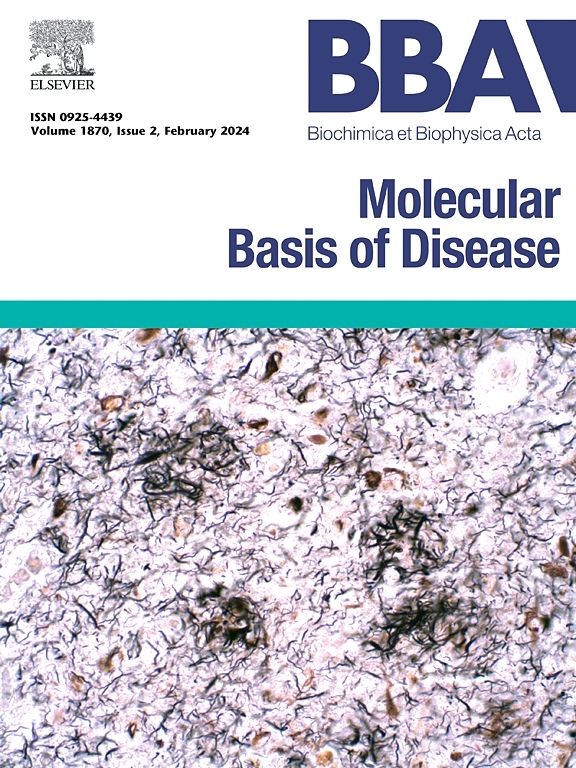Mitochondria: An overview of their origin, genome, architecture, and dynamics
IF 4.2
2区 生物学
Q2 BIOCHEMISTRY & MOLECULAR BIOLOGY
Biochimica et biophysica acta. Molecular basis of disease
Pub Date : 2025-03-19
DOI:10.1016/j.bbadis.2025.167803
引用次数: 0
Abstract
Mitochondria are traditionally viewed as the powerhouses of eukaryotic cells, i.e., the main providers of the metabolic energy required to maintain their viability and function. However, the role of these ubiquitous intracellular organelles far extends energy generation, encompassing a large suite of functions, which they can adjust to changing physiological conditions. These functions rely on a sophisticated membrane system and complex molecular machineries, most of which imported from the cytosol through intricate transport systems. In turn, mitochondrial plasticity is rooted on mitochondrial biogenesis, mitophagy, fusion, fission, and movement. Dealing with all these aspects and terminology can be daunting for newcomers to the field of mitochondria, even for those with a background in biological sciences. The aim of the present educational article, which is part of a special issue entitled “Mitochondria in aging, cancer and cell death”, is to present these organelles in a simple and concise way. Complex molecular mechanisms are deliberately omitted, as their inclusion would defeat the stated purpose of the article. Also, considering the wide scope of the article, coverage of each topic is necessarily limited, with the reader directed to excellent reviews, in which the different topics are discussed in greater depth than is possible here. In addition, the multiple cell type-specific genotypic and phenotypic differences between mitochondria are largely ignored, focusing instead on the characteristics shared by most of them, with an emphasis on mitochondria from higher eukaryotes. Also ignored are highly degenerate mitochondrion-related organelles, found in various anaerobic microbial eukaryotes lacking canonical mitochondria.
线粒体:概述其起源、基因组、结构和动力学。
线粒体传统上被认为是大多数真核细胞的动力源,也就是说,它是维持细胞活力和功能所需代谢能量的主要提供者。然而,这些无处不在的细胞内细胞器的作用远远超出了能量的产生,包括一套大的功能,它们可以适应不断变化的生理条件。这些功能依赖于复杂的膜系统和复杂的分子机制,其中大部分是通过复杂的运输系统从细胞质中输入的。反过来,线粒体的可塑性根植于线粒体的生物发生、线粒体自噬、融合、裂变和运动。处理所有这些方面和术语对于线粒体领域的新手来说可能是令人生畏的,即使对那些有生物科学背景的人来说也是如此。这篇教育性文章是题为“衰老、癌症和细胞死亡中的线粒体”特刊的一部分,其目的是以一种简单而简明的方式介绍这些细胞器。复杂的分子机制被故意省略,因为它们的包含会破坏文章的既定目的。此外,考虑到文章的广泛范围,每个主题的覆盖范围必然是有限的,读者将被引导到优秀的评论中,其中对不同主题的讨论比这里可能更深入。此外,线粒体之间的多种细胞类型特异性基因型和表型差异在很大程度上被忽视,而关注的是它们大多数共有的特征,重点是来自高等真核生物的线粒体。同样被忽视的是高度退化的线粒体相关细胞器,在各种缺乏典型线粒体的厌氧微生物真核生物中发现。
本文章由计算机程序翻译,如有差异,请以英文原文为准。
求助全文
约1分钟内获得全文
求助全文
来源期刊
CiteScore
12.30
自引率
0.00%
发文量
218
审稿时长
32 days
期刊介绍:
BBA Molecular Basis of Disease addresses the biochemistry and molecular genetics of disease processes and models of human disease. This journal covers aspects of aging, cancer, metabolic-, neurological-, and immunological-based disease. Manuscripts focused on using animal models to elucidate biochemical and mechanistic insight in each of these conditions, are particularly encouraged. Manuscripts should emphasize the underlying mechanisms of disease pathways and provide novel contributions to the understanding and/or treatment of these disorders. Highly descriptive and method development submissions may be declined without full review. The submission of uninvited reviews to BBA - Molecular Basis of Disease is strongly discouraged, and any such uninvited review should be accompanied by a coverletter outlining the compelling reasons why the review should be considered.

 求助内容:
求助内容: 应助结果提醒方式:
应助结果提醒方式:


